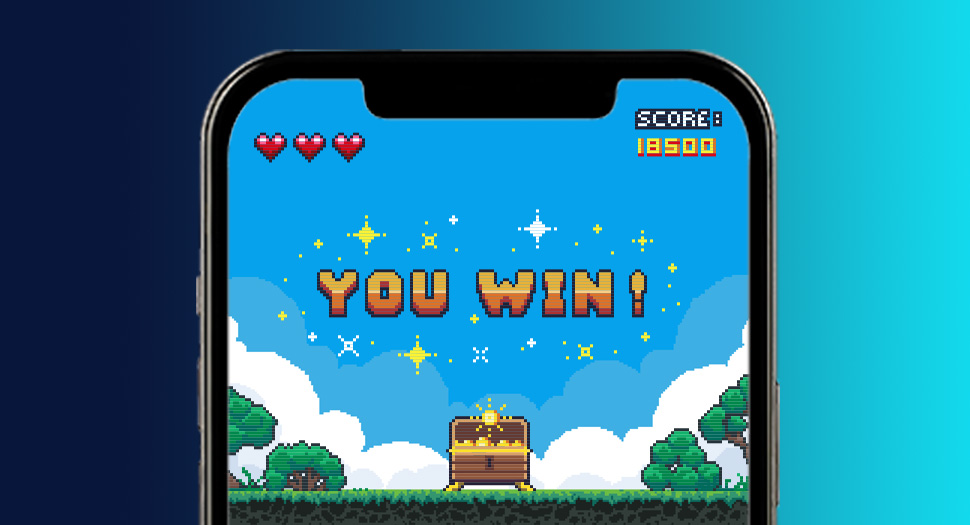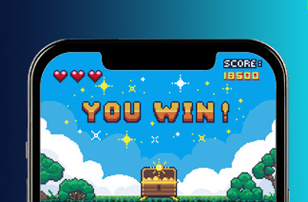Today’s young people have spent $18 billion on video game-related expenses in the last year, according to Ypulse’s December 2020 “Behavioral Report: Gaming.” With this in mind, while many members of Gen Z leverage video games for entertainment and relaxation, we know that there are promising opportunities to harness the power of video games to better engage students in developing skills that will help prepare them for future career success.
“Skills Acquisition through Entertaining Video Games” was the topic of our recent virtual session at the ISTE 2021 Online Conference. Here are key takeaways, as well as implications.
#1: Video games are everywhere and for every purpose: Youth are playing video games constantly. According to Ypulse’s December 2020 “Behavioral Report: Gaming,” 94% of 13-39-year-olds report playing video games, and 97% of American children and adolescents report playing at least an hour a day, according to Granic, Isabela, Adam Lobel, and Rutger CME Engels’, “The benefits of playing video games,” which was published in the American Psychologist (69, no. 1 (2014): 66.
Young people view video games as a place for socialization. In fact, 60 % of young gamers say games help them be social, and two thirds would rather play with a friend than by themselves, according to Ypulse’s December 2020 “Behavioral Report: Gaming.”
#2: Students play video games for fun: To gain a deeper understanding of why young gamers – 13- and 14-year-olds – play games, ASA surveyed 500 of them. These young people primarily play games for fun or to relax or escape from daily life, with almost two-thirds saying they play games for these reasons. Nearly half say they play games to be creative, with a similar percentage saying they play games because they have an interesting story and to hang out with friends or meet people. So overall, students play games to have fun, but they like the creative, narrative, and social aspects of gaming.
#3: Positive impact of video games: While the media narrative to date has focused on negative impacts of gaming, there are a variety of positive impacts of games as well, and research has begun to move toward uncovering what these positive impacts are. For example, research increasingly shows that video games can help gamers develop a host of real-world skills. Video games designed for entertainment – commercial video games – and video games designed specifically to educate – edutainment or “serious” games – are able to help gamers develop skills like attention, spatial concentration, problem solving, decision-making, collaboration, creativity, and computer skills. Games accomplish this by using failure as a motivational tool while providing some chance for success or reward – gamers respond positively to failure, generally, and feel motivation to succeed. As a result, the reward system and accompanying motivated behavior helps gamers to learn and develop skills.
#4: Research shows that there are many skills gamers can develop when playing purely for entertainment. The games Minecraft, Borderlands 2, Rayman Raving Rabbids, Team Fortress 2, Portal 2, and Civilization are all games that researchers have connected to skill development. For example, Minecraft has been used in the classroom – even though it is a game built for entertainment – to build skills in science, math, social studies, language arts, and composition. Civilization has also been used in the education space. Meanwhile, these other games have led to increases in reading comprehension, problem solving skills, communication, resourcefulness, and adaptability.
- Just as research demonstrates that games can indeed develop skills in gamers, young people feel that they have learned skills from video games. Over half of gamers that ASA has surveyed think games have taught them creativity and imagination in addition to physical skills, strategic planning, and critical thinking.
#5: Gamers are not interested in games designed primarily to educate. Many games that are designed primarily to educate suffer from poor production quality and lack of entertainment, so gamers know they are learning through a product that is only “masquerading” as fun (Barr 2018, 293). Games that prioritize entertainment over education can educate young gamers. Research backs this up, and the market is certainly moving toward developing games like Minecraft and Kerbal Space Program that have high production value, are designed for fun, and still provide opportunities for learning. With young gamers playing everywhere, there are so many opportunities to educate digital natives and help them develop skills necessary for the jobs of tomorrow.
Implications:
- Video games are ubiquitous. They are the dominant form of culture for Gen Z, with over half playing mobile and computer games weekly or more.
- There is substantial evidence (observational and self-reported) that entertaining games are fun and they teach real-world skills.
- Young gamers would be interested in playing a fun game that will tell them about their skills.
- 91% of the 500 young gamers ASA surveyed said they would be likely to play a game that is designed primarily for fun, but that would nonetheless tell them something about the real-world skills they have and are developing in the game.
We hope you found this useful. You can find the complete session recording here.
We’d love to hear your thoughts!
Works Cited:
Al-jifri, Alawi A. “The impact of video games in the acquisition of English language: The case of Saudi youths.” Journal of Foreign Language Education and Technology 2, no. 2 (2017): 15-35.
Anderson, Craig A., Akiko Shibuya, Nobuko Ihori, Edward L. Swing, Brad J. Bushman, Akira Sakamoto, Hannah R. Rothstein, and Muniba Saleem. “Violent video game effects on aggression, empathy, and prosocial behavior in eastern and western countries: a meta-analytic review.” Psychological bulletin 136, no. 2 (2010): 151.
Anderson, Craig A., Douglas A. Gentile, and Katherine E. Buckley. Violent video game effects on children and adolescents: Theory, research, and public policy. Oxford University Press, 2007.
Baek, Youngkyun, Ellen Min, and Seongchul Yun. “Mining educational implications of minecraft.” Computers in the Schools 37, no. 1 (2020): 1-16.
Barr, Matthew. “Video games can develop graduate skills in higher education students: A randomised trial.” Computers & Education 113 (2017): 86-97.
Barr, Matthew. “Student attitudes to games-based skills development: Learning from video games in higher education.” Computers in human behavior 80 (2018): 283-294.
Bavelier, Daphne, and C. Shawn Green. “Enhancing attentional control: lessons from action video games.” Neuron 104, no. 1 (2019): 147-163.
Bavelier, Daphne, Rebbeca L. Achtman, Merry Mani, and Julia Föcker. “Neural bases of selective attention in action video game players.” Vision research 61 (2012): 132-143.
“Behavioral Report: Gaming.” YPulse, December 2020.
Beserra, Vagner, Miguel Nussbaum, and Macarena Oteo. “On-task and off-task behavior in the classroom: A study on mathematics learning with educational video games.” Journal of educational computing research 56, no. 8 (2019): 1361-1383.
Carnagey, Nicholas L., Craig A. Anderson, and Brad J. Bushman. “The effect of video game violence on physiological desensitization to real-life violence.” Journal of experimental social psychology 43, no. 3 (2007): 489-496.
Chen, Sande. Facing Edutainment’s Dark Legacy, 2016. http://www.gamesandlearning.org/2016/01/25/facing-edutainments-dark-legacy/
Cheng, Meng-Tzu, Yu-Wen Lin, and Hsiao-Ching She. “Learning through playing Virtual Age: Exploring the interactions among student concept learning, gaming performance, in-game behaviors, and the use of in-game characters.” Computers & Education 86 (2015): 18-29.
Choi, Eunhye, Suk-Ho Shin, Jeh-Kwang Ryu, Kyu-In Jung, Shin-Young Kim, and Min-Hyeon Park. “Commercial video games and cognitive functions: video game genres and modulating factors of cognitive enhancement.” Behavioral and Brain Functions 16, no. 1 (2020): 2.
Cole, Helena, and Mark D. Griffiths. “Social interactions in massively multiplayer online role-playing gamers.” Cyberpsychology & behavior 10, no. 4 (2007): 575-583.
Cooper, Seth, Firas Khatib, Adrien Treuille, Janos Barbero, Jeehyung Lee, Michael Beenen, Andrew Leaver-Fay, David Baker, and Zoran Popović. “Predicting protein structures with a multiplayer online game.” Nature 466, no. 7307 (2010): 756-760.
De Aguilera, Miguel, and Alfonso Mendiz. “Video games and education: (Education in the Face of a “Parallel School”).” Computers in Entertainment (CIE) 1, no. 1 (2003): 1-10.
“Essential Facts.” Entertainment Software Association, July 10, 2020. https://www.theesa.com/essential-facts/#:~:text=2018%20was%20a%20record%2Dbreaking,one%20gamer%20in%20their%20household.
Ewoldsen, David R., Cassie A. Eno, Bradley M. Okdie, John A. Velez, Rosanna E. Guadagno, and Jamie DeCoster. “Effect of playing violent video games cooperatively or competitively on subsequent cooperative behavior.” Cyberpsychology, Behavior, and Social Networking 15, no. 5 (2012): 277-280.
Ferguson, Christopher John. “The good, the bad and the ugly: A meta-analytic review of positive and negative effects of violent video games.” Psychiatric quarterly 78, no. 4 (2007): 309-316.
Ferguson, Christopher J. “Violent video games and the Supreme Court: Lessons for the scientific community in the wake of Brown v. Entertainment Merchants Association.” American Psychologist 68, no. 2 (2013): 57.
Ferguson, Christopher J., and Cheryl K. Olson. “Friends, fun, frustration and fantasy: Child motivations for video game play.” Motivation and Emotion 37, no. 1 (2013): 154-164.
Franceschini, Sandro, Simone Gori, Milena Ruffino, Simona Viola, Massimo Molteni, and Andrea Facoetti. “Action video games make dyslexic children read better.” Current Biology 23, no. 6 (2013): 462-466.
Gampell, Anthony, J. C. Gaillard, Meg Parsons, and Loic Le De. “Fostering student participation in disaster risk reduction through disaster video games.” Australian Journal of Emergency Management, The 35, no. 2 (2020): 43-50.
Gentile, Douglas A., and J. Ronald Gentile. “Violent video games as exemplary teachers: A conceptual analysis.” Journal of Youth and Adolescence 37, no. 2 (2008): 127-141..
Gentile, Douglas A., Craig A. Anderson, Shintaro Yukawa, Nobuko Ihori, Muniba Saleem, Lim Kam Ming, Akiko Shibuya et al. “The effects of prosocial video games on prosocial behaviors: International evidence from correlational, longitudinal, and experimental studies.” Personality and Social Psychology Bulletin 35, no. 6 (2009): 752-763.
Global Web Index. “Gen Z: Observing the latest trends on Gen Zs.” Global Web Index 2020.
González-González, Carina, Pedro Toledo-Delgado, Cesar Collazos-Ordoñez, and José L. González-Sánchez. “Design and analysis of collaborative interactions in social educational videogames.” Computers in Human Behavior 31 (2014): 602-611.
Granic, Isabela, Adam Lobel, and Rutger CME Engels. “The benefits of playing video games.” American psychologist 69, no. 1 (2014): 66.
Green, C. Shawn, and Daphne Bavelier. “Learning, attentional control, and action video games.” Current biology 22, no. 6 (2012): R197-R206.
Griffith, M. “Does internet and computer ‘addiction’ exist? Some case study evidence.” CyberPsychology and Behavior 3, no. 2 (2000): 211-218.
Griffiths, M. D. “The therapeutic value of videogames.” (2005): 161-171.
Griffiths, Mark D. “Videogame addiction: fact or fiction?.” (2008).
Gross, James J., and Oliver P. John. “Individual differences in two emotion regulation processes: implications for affect, relationships, and well-being.” Journal of personality and social psychology 85, no. 2 (2003): 348.
Habgood, J. “Wii don’t do edutainment.” Proceedings of Game-based Learning (2009): 19-20.
Hodges, Georgia W., Kayla Flanagan, Juyeon Lee, Allan Cohen, Sandhya Krishnan, and Cynthia Ward. “A quasi‐experimental study comparing learning gains associated with serious educational gameplay and hands‐on science in elementary classrooms.” Journal of Research in Science Teaching 57, no. 9 (2020): 1460-1489.
Horowitz, Kenneth S. “Video Games and English as a Second Language: The Effect of Massive Multiplayer Online Video Games on the Willingness to Communicate and Communicative Anxiety of College Students in Puerto Rico.” American journal of play 11, no. 3 (2019): 379-410.
Jackson, Linda A., Edward A. Witt, Alexander Ivan Games, Hiram E. Fitzgerald, Alexander Von Eye, and Yong Zhao. “Information technology use and creativity: Findings from the Children and Technology Project.” Computers in human behavior 28, no. 2 (2012): 370-376.
Karsenti, T., Burgmann, J., and Gros, P.P. “Transforming Education with Minecraft? Results of an exploratory study conducted with 118 elementary-school students.” CRIFPE (2017).
Kato, Pamela M. “Video games in health care: Closing the gap.” Review of general psychology 14, no. 2 (2010): 113-121.
Kato, Pamela M., Steve W. Cole, Andrew S. Bradlyn, and Brad H. Pollock. “A video game improves behavioral outcomes in adolescents and young adults with cancer: a randomized trial.” Pediatrics 122, no. 2 (2008): e305-e317.
Kenwright, Ben. “Brief review of video games in learning & education how far we have come.” In SIGGRAPH Asia 2017 Symposium on Education, pp. 1-10. 2017.
Kirriemuir, J. “Computer and video games in curriculum-based education.” London, UK: Department for Education and Skills 2 (2005).
Lemola, Sakari, Serge Brand, Nicole Vogler, Nadine Perkinson-Gloor, Mathias Allemand, and Alexander Grob. “Habitual computer game playing at night is related to depressive symptoms.” Personality and individual differences 51, no. 2 (2011): 117-122.
Lenhart, Amanda, Joseph Kahne, Ellen Middaugh, Alexandra Rankin Macgill, Chris Evans, and Jessica Vitak. “Teens, Video Games, and Civics: Teens’ Gaming Experiences Are Diverse and Include Significant Social Interaction and Civic Engagement.” Pew internet & American life project (2008).
Lombardi, Ivan. “Computer games as a tool for language education.” G| A| M| E Games as Art, Media, Entertainment 1, no. 1 (2012).
Masek, Martin, Julie Boston, Chiou-Peng Lam, and Stephen Corcoran. “Improving mastery of fractions by blending video games into the Math classroom.” Journal of Computer Assisted Learning 33, no. 5 (2017): 486-499.
McGonigal, Jane. Reality is broken: Why games make us better and how they can change the world. Penguin, 2011.
Newcombe, Jonathan, and Billy Brick. “Blending video games into language learning.” International Journal of Computer-Assisted Language Learning and Teaching (IJCALLT) 7, no. 4 (2017): 75-89.
de Gortari, Angelica B. Ortiz, Karin Aronsson, and Mark Griffiths. “Game Transfer Phenomena in video game playing: A qualitative interview study.” International Journal of Cyber Behavior, Psychology and Learning (IJCBPL) 1, no. 3 (2011): 15-33.
Pitarch, Ricardo Casañ. “An approach to digital game-based learning: Video-games principles and applications in foreign language learning.” Journal of Language Teaching and Research 9, no. 6 (2018): 1147-1159.
Prensky, Marc R. From digital natives to digital wisdom: Hopeful essays for 21st century learning. Corwin Press, 2012.
Ricardo, Casañ Pitarch. “Gamifying content and language integrated learning with serious videogames.” Journal of Language and Education 3, no. 3 (2017)
Russoniello, Carmen V., Kevin O’Brien, and Jennifer M. Parks. “EEG, HRV and Psychological Correlates while Playing Bejeweled II: A Randomized Controlled Study.” Annual review of cybertherapy and telemedicine 7, no. 1 (2009): 189-192.
Salminen, Mikko, and Niklas Ravaja. “Increased oscillatory theta activation evoked by violent digital game events.” Neuroscience letters 435, no. 1 (2008): 69-72.
Sánchez-Mena, Antonio, and José Martí-Parreño. “Teachers acceptance of educational video games: A comprehensive literature review.” Journal of e-Learning and Knowledge Society 13, no. 2 (2017).
Schmierbach, Mike. ““Killing spree”: Exploring the connection between competitive game play and aggressive cognition.” Communication Research 37, no. 2 (2010): 256-274.
Schott, Gareth, and Jasper van Vught. “Replacing preconceived accounts of digital games with experience of play: When parents went native in GTA IV.” Transactions of the Digital Games Research Association 1, no. 1 (2013).
Shute, Valerie J., Matthew Ventura, and Fengfeng Ke. “The power of play: The effects of Portal 2 and Lumosity on cognitive and noncognitive skills.” Computers & education 80 (2015): 58-67.
Smaldone, Ronald A., Christina M. Thompson, Monica Evans, and Walter Voit. “Teaching science through video games.” Nature chemistry 9, no. 2 (2017): 97-102.
Smith, Ernie. “Educational Video Games Just Never Got Things Right.” VICE, April 26, 2017. https://www.vice.com/en/article/78y4g9/educational-video-games-just-never-got-things-right
“The Future of Gaming.” New York Times, January 14, 2021.
“The video game industry is adding 2–17-year-old gamers at a rate higher than that age group’s population growth.” NPD Group. (2011) Retrieved from: Https://www.npd.com/wps/portal/npd/us/news/pressreleases/pr_111011
Uttal, David H., Nathaniel G. Meadow, Elizabeth Tipton, Linda L. Hand, Alison R. Alden, Christopher Warren, and Nora S. Newcombe. “The malleability of spatial skills: a meta-analysis of training studies.” Psychological bulletin 139, no. 2 (2013): 352.
Uusi-Mäkelä, Mikael. “Learning English in Minecraft: a case study on language competences and classroom practices.” Master’s thesis, 2015.
Wai, Jonathan, David Lubinski, Camilla P. Benbow, and James H. Steiger. “Accomplishment in science, technology, engineering, and mathematics (STEM) and its relation to STEM educational dose: A 25-year longitudinal study.” Journal of Educational Psychology 102, no. 4 (2010): 860.
Yanev, Victor. “Video Game Demographics – Who Plays Games in 2021.” TechJury. (2021) Retrieved from: https://techjury.net/blog/video-game-demographics/#gref




